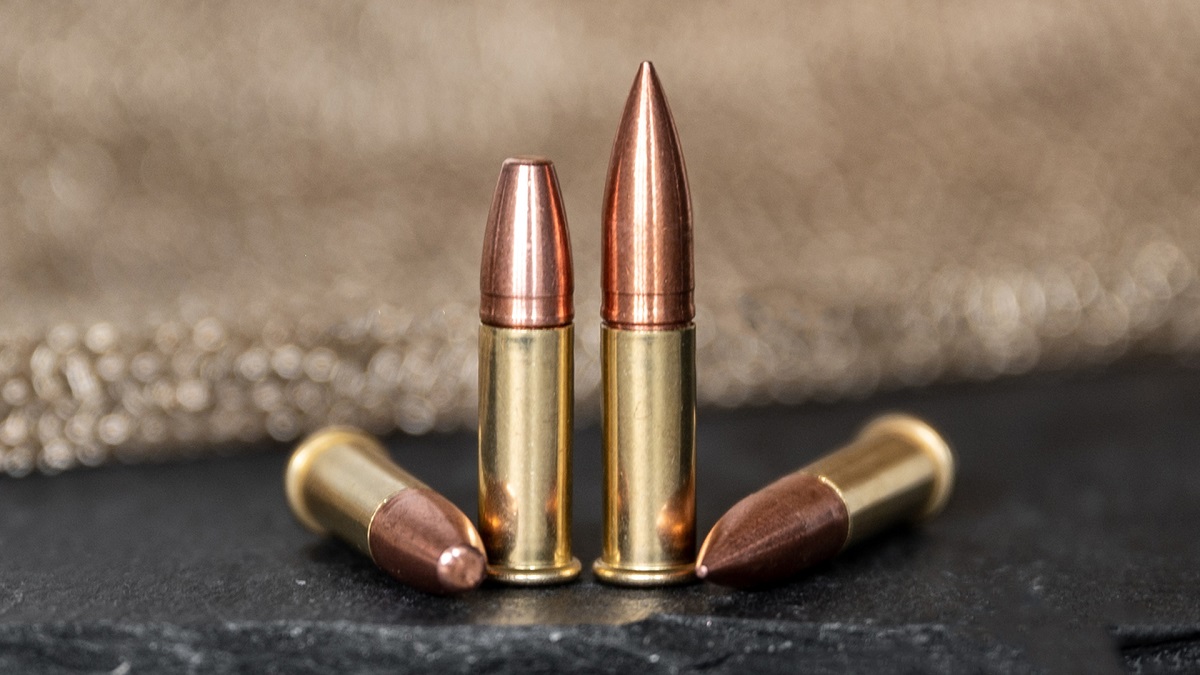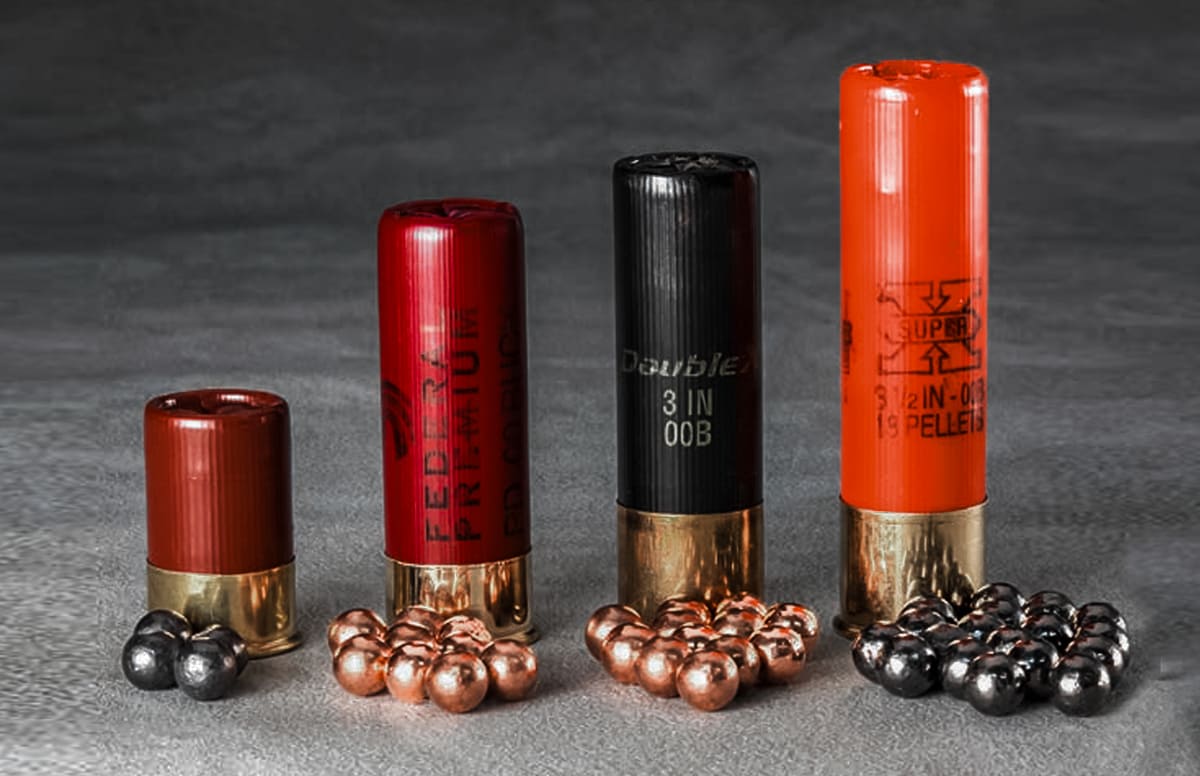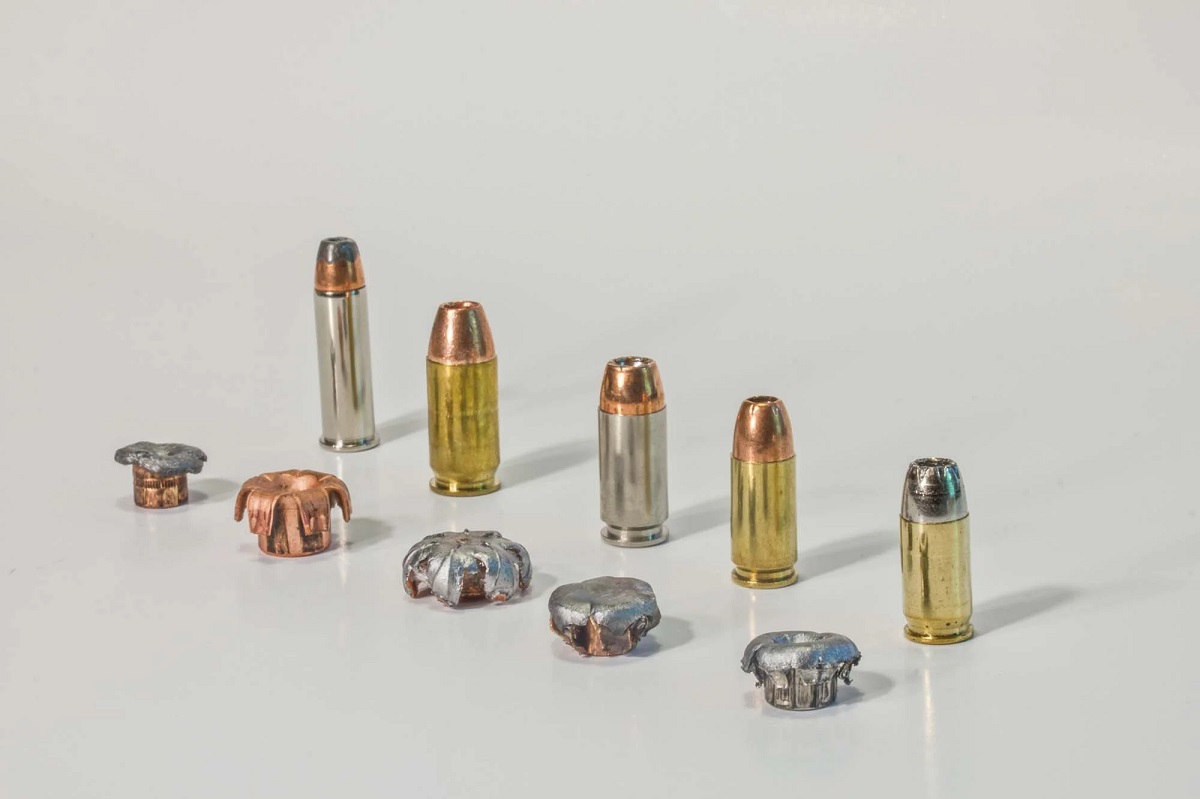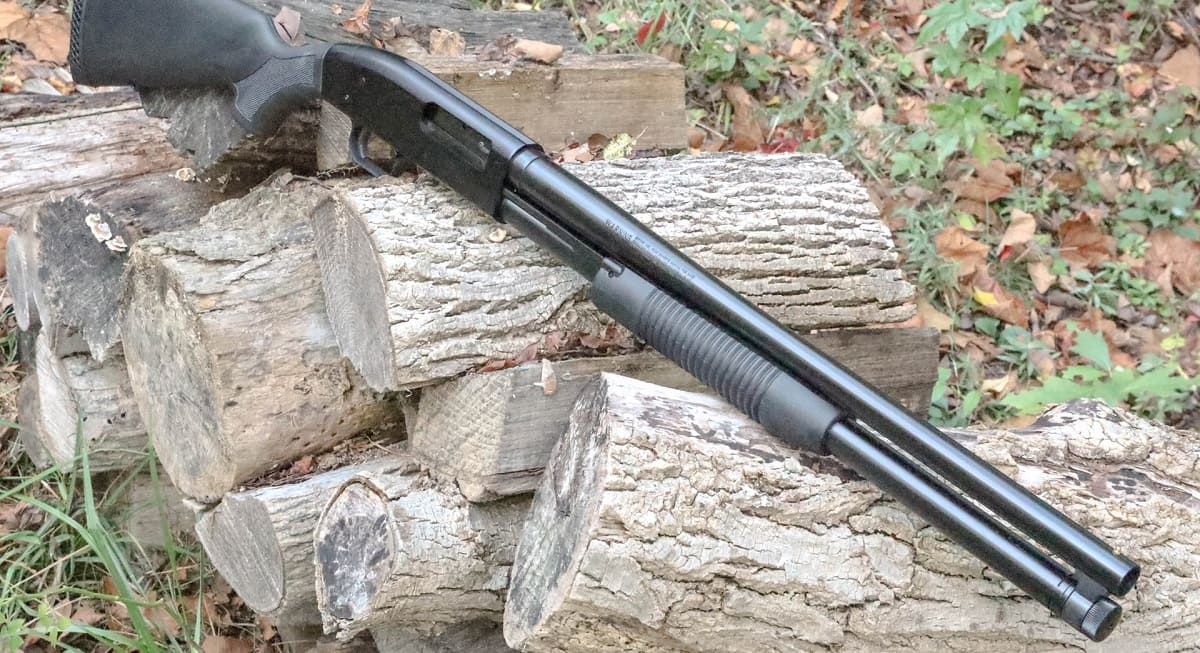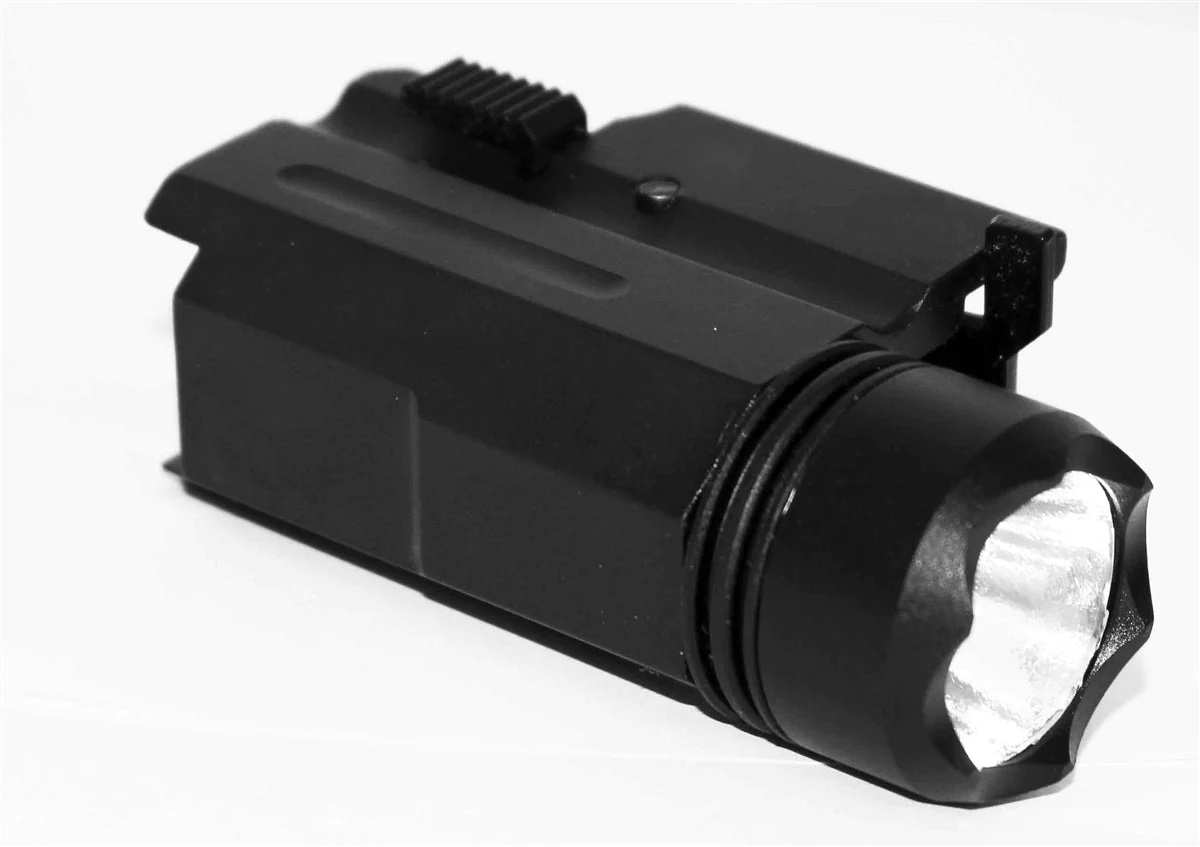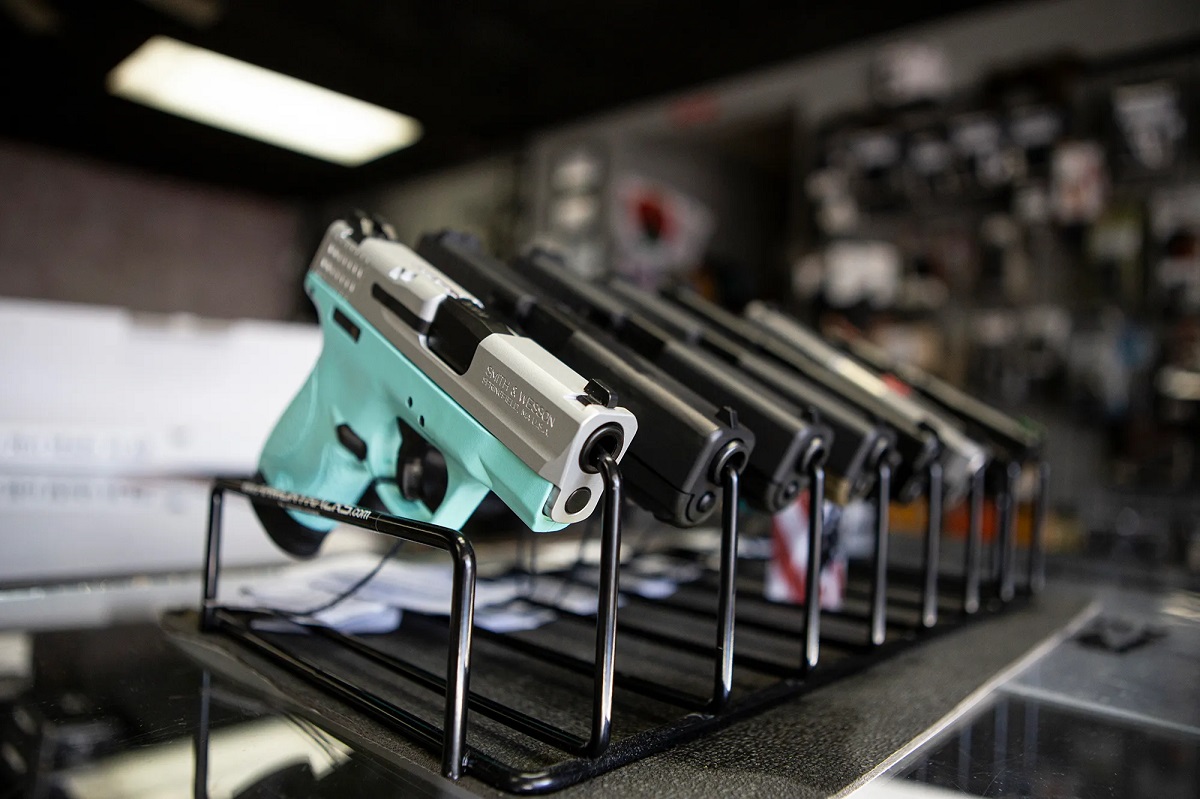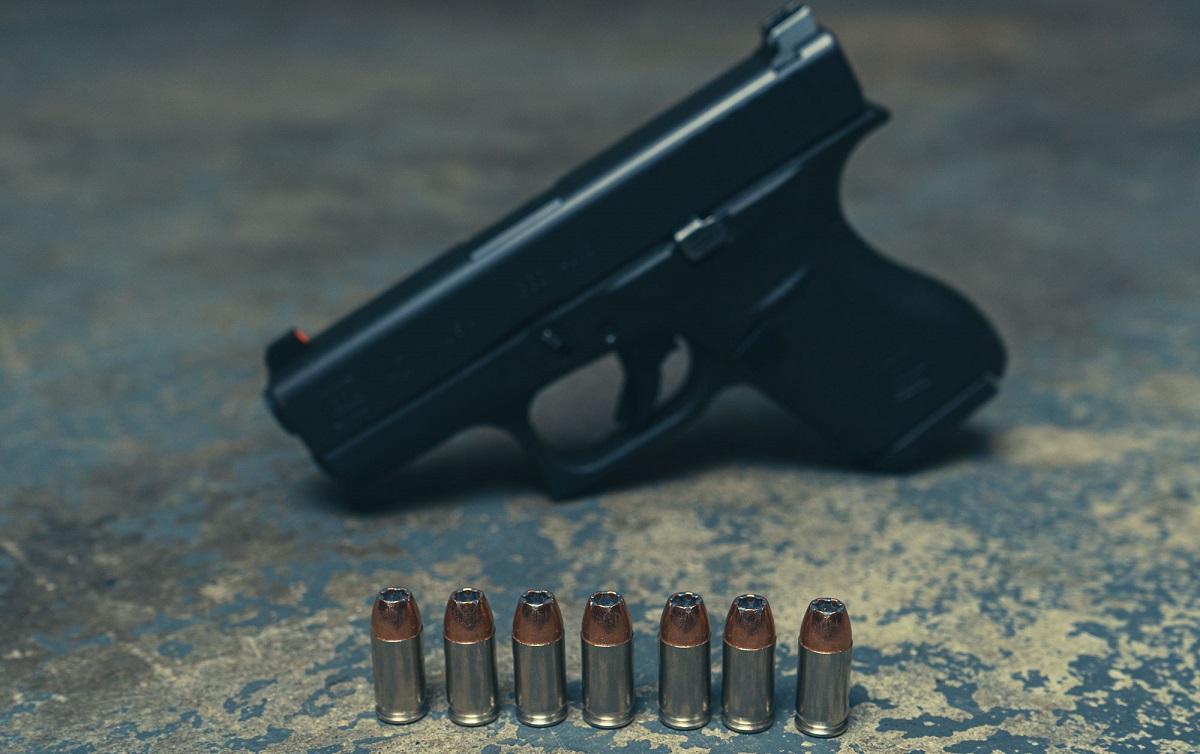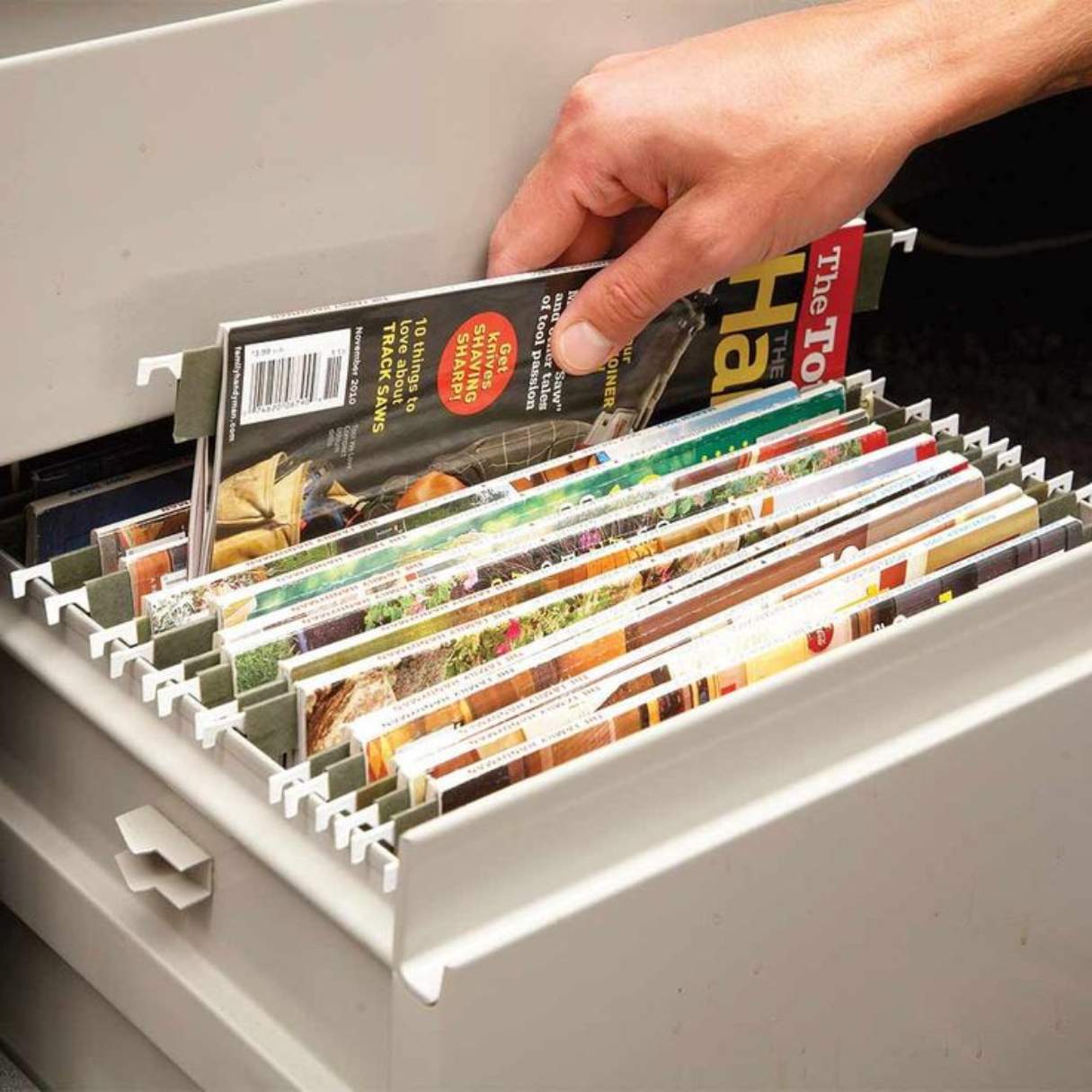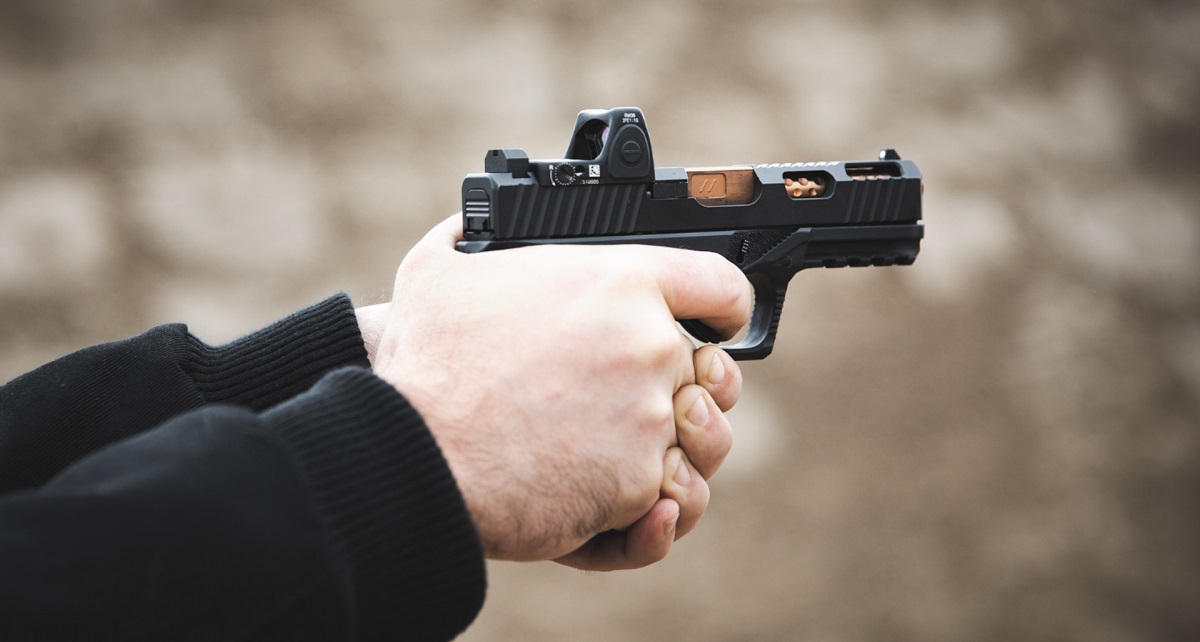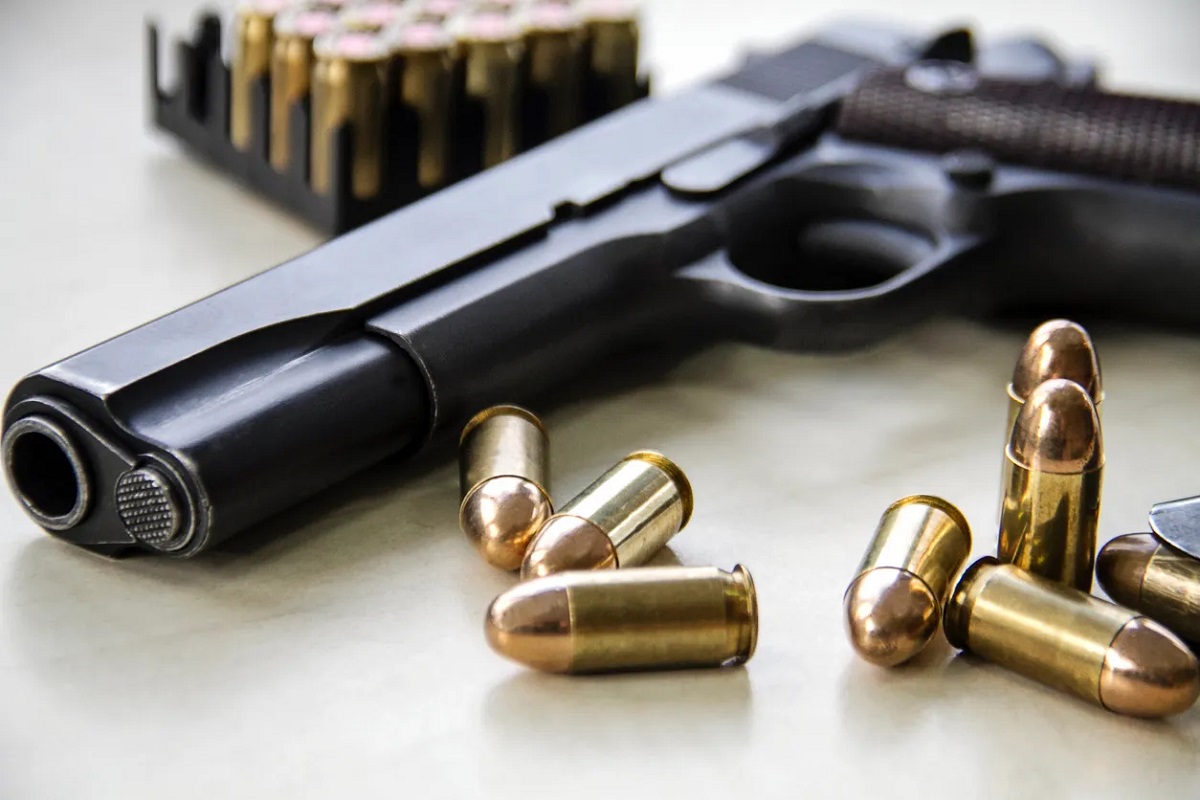Home>Home Security and Surveillance>How Many Bullets In A Magazine For Home Defense


Home Security and Surveillance
How Many Bullets In A Magazine For Home Defense
Modified: March 6, 2024
Discover the ideal number of bullets for home defense with our comprehensive guide on home security and surveillance. Learn how to choose the right magazine capacity for optimal protection.
(Many of the links in this article redirect to a specific reviewed product. Your purchase of these products through affiliate links helps to generate commission for Storables.com, at no extra cost. Learn more)
Introduction
In today’s unpredictable world, ensuring the safety and security of our homes has become a top priority for many individuals. Home security and surveillance systems play a vital role in protecting our families and valuable assets. However, the importance of equipping ourselves with the right tools for home defense cannot be overstated.
One essential component of a comprehensive home defense strategy is having the right ammunition and equipment, including magazines, for our firearms. A magazine is a device that holds and feeds ammunition into a firearm. Understanding the purpose and capacity of magazines for home defense is crucial in making informed decisions when choosing the right one.
In this article, we will delve into the world of home defense magazines, exploring different factors to consider when selecting one and the pros and cons of different magazine capacities. Additionally, we will discuss legal restrictions regarding magazine capacities and provide recommendations for different home defense situations.
So, if you’re ready to enhance your home defense preparedness, let’s dive in and explore the fascinating world of home defense magazines!
Key Takeaways:
- Choose a home defense magazine with the right capacity, reliability, and ease of use to ensure quick and efficient response to potential threats while considering local laws and regulations.
- Practice effective magazine management through training and skill development to enhance readiness for home defense situations, ensuring seamless reloads and safeguarding your home and loved ones.
Understanding the Purpose of a Home Defense Magazine
When it comes to home defense, having a reliable and efficient magazine for your firearm is essential. The purpose of a home defense magazine is to securely hold and feed ammunition into your firearm, allowing you to quickly and effectively respond to potential threats. A properly functioning magazine ensures that you have an ample supply of ammunition readily available when every second counts.
Home defense situations can happen suddenly and escalate rapidly. Any delay in reloading your firearm due to a malfunctioning or inadequate magazine can have serious consequences. A high-quality home defense magazine not only provides a seamless feeding of ammunition but also minimizes the risk of malfunctions and enables smooth and efficient reloads.
Furthermore, a home defense magazine should be easy to handle and manipulate, even in high-stress situations. The design and construction of the magazine should allow for quick and reliable insertion and extraction from your firearm. This ensures that you can swiftly reload your firearm without fumbling or wasting valuable time.
Additionally, a home defense magazine should have a sturdy and durable construction to withstand the rigors of regular use and potentially harsh environments. Reliability is paramount when it comes to home defense, as any failure of the magazine could result in a firearm malfunction.
Overall, the purpose of a home defense magazine is to provide a reliable, efficient, and user-friendly ammunition feeding system for your firearm. It is an essential component of your home defense strategy, enabling you to respond effectively to potential threats and safeguard your home and loved ones.
Factors to Consider When Choosing a Magazine for Home Defense
Selecting the right magazine for home defense is a critical decision that can significantly impact your ability to respond effectively in a threatening situation. Here are several key factors to consider when choosing a magazine for home defense:
- Reliability: The most important factor to consider is the reliability of the magazine. Look for magazines that are known for their consistent feeding and minimal malfunctions. Consult with experts, read reviews, and consider reputable brands with a track record of reliability.
- Capacity: Magazine capacity can vary depending on the firearm type and local regulations. Consider the balance between having enough ammunition readily available and the added weight and size of higher-capacity magazines. Analyze your specific home defense needs and choose a magazine capacity that suits your requirements.
- Compatibility: Ensure that the magazine you choose is compatible with your firearm make and model. Not all magazines are universally compatible, so it’s crucial to select one specifically designed for your firearm to ensure proper fit and reliable functioning.
- Ease of Use: A magazine that is easy to insert, extract, and manipulate is essential for fast and efficient reloads. Look for features such as textured grips, ergonomic designs, and smooth follower movement that contribute to ease of use, especially in high-stress situations.
- Construction and Materials: Consider the construction and materials used in the magazine’s manufacturing. Look for magazines made from durable materials such as stainless steel or high-strength polymers that can withstand regular use and potential environmental factors.
- Availability and Cost: Ensure that the magazines you choose are readily available for purchase and reasonably priced. It’s recommended to have multiple magazines for practice, training, and immediate use, so factor in the cost and availability when making your decision.
By carefully considering these factors when choosing a magazine for home defense, you can select a reliable and suitable option that enhances your preparedness and ensures your ability to respond effectively in a home defense situation.
Common Magazine Capacities for Different Firearm Types
Magazine capacity varies depending on the type of firearm and its intended purpose. Understanding the common magazine capacities for different firearm types is essential when selecting the right magazine for your home defense needs.
Here are some of the common magazine capacities for different firearm types:
- Pistols: Pistols typically have magazines with capacities ranging from 6 to 17 rounds. Compact and subcompact pistols tend to have lower capacities, while full-size pistols often accommodate higher-capacity magazines.
- Shotguns: Shotguns usually use tubular magazines that hold multiple shells. Common shotgun magazine capacities include 4+1, 6+1, and 8+1, depending on the shotgun model and barrel length.
- Rifles: Rifle magazine capacities can vary significantly depending on the specific rifle design and intended use. The most common rifle magazine capacities range from 5 to 30 rounds, with some specialized rifle platforms accommodating even higher-capacity magazines.
- Assault Rifles: Assault rifles, such as the ubiquitous AR-15 platform, often use detachable magazines with capacities ranging from 10 to 30 rounds. However, it’s essential to be aware of local laws and restrictions regarding magazine capacities in your area.
- Submachine Guns: Submachine guns are typically chambered in pistol calibers and commonly employ detachable magazines. Magazine capacities for submachine guns can range from 10 to 50 rounds, depending on the specific firearm model.
It’s crucial to note that magazine capacities can also be affected by local laws and regulations. In some areas, there may be restrictions on the maximum capacity allowed for civilian use. Therefore, it’s important to familiarize yourself with local laws before purchasing or using magazines with higher capacities.
When selecting a magazine for home defense, consider the firearm type and your specific needs. Take into account factors such as ease of use, weight, and the trade-off between magazine capacity and size. By understanding the common magazine capacities for different firearm types, you can make an informed decision that aligns with your home defense requirements.
Exploring the Pros and Cons of Different Magazine Capacities
When it comes to magazine capacities for home defense, there are both advantages and disadvantages to consider. The choice of magazine capacity depends on various factors, including personal preferences, home defense scenarios, and local regulations. Let’s explore the pros and cons of different magazine capacities:
- Low Capacity: Low-capacity magazines, typically holding 6 to 10 rounds, have their advantages. They are often compact, lightweight, and easier to conceal, making them suitable for concealed carry or home defense scenarios where discretion is necessary. Low-capacity magazines also tend to be less prone to malfunctions and have increased reliability since they have fewer moving parts. However, one notable disadvantage is the limited ammunition supply, requiring more frequent reloads and potentially reducing your ability to sustain prolonged engagements.
- Standard Capacity: Standard-capacity magazines, holding around 15 to 17 rounds for pistols and 30 rounds for rifles, strike a balance between ammunition capacity and overall size. They offer sufficient firepower for most home defense situations without being excessive. Standard-capacity magazines allow for longer engagements without the need for immediate reloads, providing a sense of confidence and reducing the potential for stress-induced mistakes. However, they can be bulkier and heavier, making concealment more challenging.
- High Capacity: High-capacity magazines, with capacities exceeding standard limits, often range from 20 to 30 rounds for pistols and even higher for rifles. The primary advantage of high-capacity magazines is the extended ammunition supply they provide, reducing the need for frequent reloads and potentially improving your ability to confront multiple threats. However, high-capacity magazines can be larger, heavier, and more cumbersome to handle, affecting firearm balance and maneuverability. Additionally, some jurisdictions have restrictions on high-capacity magazines, limiting their availability and legal use.
- Extended Capacity: Extended-capacity magazines are designed to offer additional rounds beyond standard capacity while maintaining a relatively compact size. They typically have specialized designs and utilize techniques such as increased magazine length or baseplate extensions to achieve higher round counts. These magazines provide a balance between ammunition capacity and overall size, offering a compromise for those who desire more rounds without sacrificing concealability. However, extended-capacity magazines can be more prone to malfunctions due to the increased complexity of their design.
Ultimately, the choice of magazine capacity for home defense will depend on your individual needs, preferences, and the specific home defense scenario you anticipate. Consider factors such as potential threats, the likelihood of extended engagements, and the level of comfort and confidence you have with various magazine capacities. Additionally, always assess and adhere to local laws and regulations regarding magazine capacities to ensure compliance.
By weighing the pros and cons of different magazine capacities, you can make an informed decision that aligns with your home defense requirements and enhances your ability to effectively respond to potential threats.
A standard magazine for a home defense handgun typically holds 10-15 bullets. It’s important to check your local laws and regulations regarding magazine capacity.
Legal Restrictions on Magazine Capacities for Home Defense
It is important to be aware of and understand the legal restrictions regarding magazine capacities for home defense firearms in your jurisdiction. Regulations on magazine capacities can vary from country to country and even from state to state. These restrictions aim to balance public safety concerns with the individual’s right to self-defense. Here are some key points to consider:
1. Local Laws and Regulations: Familiarize yourself with the laws and regulations specific to your area. Some jurisdictions impose limits on magazine capacities, restricting the number of rounds a magazine can hold. It is essential to know the specific legal limits applicable to your firearm and magazine before making a purchase or using them for home defense.
2. Restricted Firearm Types: Certain firearm types may be subject to stricter regulations concerning magazine capacities. For instance, in some regions, the capacity allowed for handguns may differ from that of rifles or shotguns. Regulations may also differ based on the firearm’s classification, such as handguns intended for concealed carry versus those intended for open carry or home defense.
3. Exceptions and Exemptions: Some jurisdictions may provide exceptions or exemptions to magazine capacity restrictions, such as for law enforcement officers or specific types of firearms used for professional purposes. However, it is crucial to fully understand the requirements and qualifications for such exceptions before assuming that they apply to you.
4. Travel Restrictions: If you plan to travel with firearms and magazines, be aware that different jurisdictions may have varying regulations. Even if your home jurisdiction allows high-capacity magazines, it does not necessarily mean that other states or countries you visit will have the same allowances. Always research and comply with the regulations of your destination to avoid legal issues.
5. Penalties for Non-Compliance: It is important to note that violating magazine capacity restrictions can result in legal consequences, including fines, confiscation of firearms and magazines, and even potential criminal charges. Ignorance of the law is not a valid defense, so it is your responsibility to ensure compliance with applicable regulations.
To navigate the legal landscape regarding magazine capacities for home defense, consult local laws and regulations, seek guidance from legal professionals, and stay informed about any updates or changes to legislation. Adherence to the law not only ensures your legal standing but also contributes to a safer and more responsible home defense environment.
Recommended Magazine Capacities for Different Home Defense Situations
When it comes to selecting the appropriate magazine capacity for home defense, it is crucial to consider the specific scenarios you may encounter. While individual preferences and local regulations play a role, here are some recommended magazine capacities for different home defense situations:
- Home Invasion: In a home invasion scenario, where a threat is inside your residence, having a magazine capacity of at least 15 rounds for a pistol or 30 rounds for a rifle is recommended. This allows for sufficient ammunition to respond to potential multiple attackers or extended engagements without the immediate need for a reload.
- Urban Setting: If you live in an urban area with a higher population density, consider the potential for encountering multiple threats or prolonged engagements. In such situations, having a magazine capacity of 15 to 20 rounds for a pistol or 30 to 40 rounds for a rifle can provide added confidence and reduce the need for immediate reloads.
- Rural or Large Property: If you reside in a rural area or have a large property to defend, there may be an increased distance between you and potential threats. In such cases, having a rifle with a magazine capacity of 20 to 30 rounds or more can be beneficial, as it provides the ability to engage threats from a distance and sustain prolonged engagements without frequent reloads.
- Concealed Carry: For individuals who carry a concealed firearm for personal protection, magazine capacity may be limited due to factors like firearm size, weight, and concealability. In such cases, a compact pistol with a magazine capacity of 10 to 15 rounds can still provide sufficient ammunition for most self-defense scenarios while maintaining ease of concealment.
- Personal Skill and Comfort Level: It is important to consider your personal skill level and comfort with handling firearms when choosing a magazine capacity. If you are a novice or less experienced shooter, a lower-capacity magazine may be more suitable to allow for easier manipulation and control. As your skills improve and you become more comfortable, you can gradually increase the magazine capacity to meet your evolving needs.
Remember, these recommendations are a general guide, and personal preferences may vary. Additionally, always ensure compliance with local laws and regulations regarding magazine capacities for home defense firearms.
Ultimately, the recommended magazine capacity for different home defense situations depends on various factors such as the potential number and proximity of threats, the setting in which the defense occurs, and your individual skill and comfort level. By carefully evaluating these factors, you can select a magazine capacity that enhances your readiness to respond effectively to potential home defense scenarios.
Training and Skill Development for Effective Magazine Management
When it comes to home defense, having the right magazine is not enough; proper training and skill development in magazine management are essential to ensure effective firearm operation and response in high-stress situations. Here are some key aspects to consider when it comes to training for effective magazine management:
- Firearm Familiarization: Before focusing on magazine management, it is crucial to have a solid understanding of your firearm. Familiarize yourself with its operation, including the proper insertion, extraction, and manipulation of the magazine. Ensure you know the location and function of the magazine release mechanism and practice executing magazine changes without looking.
- Magazine Handling Drills: Dedicate training time to specific drills that focus on magazine changes. Start with basic drills such as dry-fire drills, where you practice removing and inserting an unloaded magazine. Gradually progress to live-fire drills, integrating magazine changes into scenario-based training to simulate realistic home defense situations.
- Speed and Efficiency: Practice magazine changes to improve your speed and efficiency. Time and measure your reloads to identify areas for improvement. Focus on smooth and fluid motions, minimizing unnecessary movements. With consistent practice, you can reduce reload times and ensure a seamless transition to a fresh magazine in critical moments.
- Retention and Accessibility: Train to retain and access spare magazines effectively. Explore different methods of carrying spare magazines, such as magazine pouches or pocket carry. Consider factors like accessibility, comfort, and retention to find a method that works best for you. Regularly practice drawing and replacing spare magazines to become proficient in accessing them quickly and reliably.
- Stress Inoculation: Introduce stressors during training to simulate the psychological and physiological effects of a high-stress home defense scenario. Incorporate timed drills, physical exercise, and simulated distractions to replicate the adrenaline surge and cognitive challenges you might face. Training under stress conditions helps build resilience, enhances decision-making abilities, and improves magazine management under pressure.
- Continual Practice: Magazine management is a skill that requires regular practice and maintenance. Incorporate magazine changes and reload drills into your regular firearms training regimen. Consider enrolling in defensive shooting courses or seeking professional instruction to develop and refine your skills further. Regular practice helps build muscle memory and ensures that magazine management becomes second nature.
Remember, safety should always be the top priority during training. Follow proper firearm handling protocols, conduct training in a controlled environment, and ensure you have a clear range of fire.
By dedicating time and effort to training and skill development in magazine management, you can enhance your readiness for home defense situations. Effective magazine management facilitates quick and efficient reloads, ensuring you have the necessary ammunition to respond to threats and safeguard your home and loved ones.
Conclusion
Selecting the right magazine for home defense is crucial for ensuring your ability to respond effectively and protect yourself and your loved ones. By understanding the purpose of a home defense magazine and considering factors such as reliability, capacity, compatibility, ease of use, and construction, you can make an informed decision that aligns with your specific needs.
Exploring the pros and cons of different magazine capacities allows you to strike a balance between ammunition supply, size, and ease of handling. Whether you opt for low-capacity magazines for discreet carry or high-capacity magazines for extended engagements, it’s vital to be aware of legal restrictions in your jurisdiction and adhere to the applicable laws.
Consider the specific home defense situations you may encounter when selecting magazine capacities. Whether it’s a home invasion, urban setting, or rural property, choose a capacity that provides you with confidence and the ability to respond effectively to potential threats.
In addition to selecting the right magazine, investing time in training and skill development for effective magazine management is crucial. Familiarize yourself with your firearm and practice magazine changes to improve speed, efficiency, and retention. Regular training, incorporating stressors, and seeking professional instruction are essential for honing your skills and ensuring readiness in high-stress situations.
Remember, the goal of magazine management is to ensure seamless reloads, reducing the potential for malfunctions and enabling you to maintain a reliable supply of ammunition. By combining the right magazine with proper training, you enhance your ability to protect yourself, your home, and your loved ones.
Stay informed about local laws and regulations, regularly practice magazine management skills, and continually assess and adapt to your evolving needs. By prioritizing home defense preparedness and making informed decisions about magazine capacities, you can bolster your overall home security strategy and gain peace of mind knowing you are well-equipped to handle potential threats.
Frequently Asked Questions about How Many Bullets In A Magazine For Home Defense
Was this page helpful?
At Storables.com, we guarantee accurate and reliable information. Our content, validated by Expert Board Contributors, is crafted following stringent Editorial Policies. We're committed to providing you with well-researched, expert-backed insights for all your informational needs.
